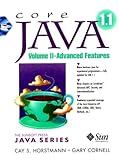Core Java Vol-II ; Advanced Features
Material type: TextPublication details: California Sun Microsystems Press 1998Edition: 1st edDescription: 661pISBN:
TextPublication details: California Sun Microsystems Press 1998Edition: 1st edDescription: 661pISBN: - 9780137669653
- 005.342 HOR-C
| Item type | Current library | Collection | Call number | URL | Status | Date due | Barcode | |
|---|---|---|---|---|---|---|---|---|
 Books
Books
|
Amity Central Library AIIT | Reference | 005.342 HOR-C (Browse shelf(Opens below)) | Link to resource | Not For Loan | 27489 | ||
 Books
Books
|
Amity Central Library AIIT | 005.342 HOR-C (Browse shelf(Opens below)) | Link to resource | Available | 27490 | |||
 Books
Books
|
Amity Central Library AIIT | 005.342 HOR-C (Browse shelf(Opens below)) | Link to resource | Available | 27491 |
Browsing Amity Central Library shelves, Shelving location: AIIT Close shelf browser (Hides shelf browser)

|

|

|

|

|

|

|
||
| 005.3068 BEM-S Software Project Management : A Practitioner's Approach | 005.342 BAL-P PROGRAMMING WITH JAVA : A PRIMER | 005.342 HOR-C Core Java Vol-II ; Advanced Features | 005.342 HOR-C Core Java Vol-II ; Advanced Features | 005.342 HOR-C Core Java Vol-II ; Advanced Features | 005.42 BEC-S Systems Software | 005.42 BEC-S Systems Software |
Chapter 1: Streams
1.1 From Iterating to Stream Operations
1.2 Stream Creation
1.3 The filter, map, and flatMap Methods
1.4 Extracting Substreams and Combining Streams
1.5 Other Stream Transformations
1.6 Simple Reductions
1.7 The Optional Type
1.8 Collecting Results
1.9 Collecting into Maps
1.10 Grouping and Partitioning
1.11 Downstream Collectors
1.12 Reduction Operations
1.13 Primitive Type Streams
1.14 Parallel Streams
Chapter 2: Input and Output
2.1 Input/Output Streams
2.2 Reading and Writing Binary Data
2.3 Object Input/Output Streams and Serialization
2.4 Working with Files
2.5 Memory-Mapped Files
2.6 File Locking
2.7 Regular Expressions
Chapter 3: XML
3.1 Introducing XML
3.2 The Structure of an XML Document
3.3 Parsing an XML Document
3.4 Validating XML Documents
3.5 Locating Information with XPath
3.6 Using Namespaces
3.7 Streaming Parsers
3.8 Generating XML Documents
3.8.5 An Example: Generating an SVG File
3.9 XSL Transformations
Chapter 4: Networking
4.1 Connecting to a Server
4.2 Implementing Servers
4.3 Getting Web Data
4.4 The HTTP Client
4.5 Sending E-Mail
Chapter 5: Database Programming
5.1 The Design of JDBC
5.2 The Structured Query Language
5.3 JDBC Configuration
5.4 Working with JDBC Statements
5.5 Query Execution
5.6 Scrollable and Updatable Result Sets
5.7 Row Sets
5.8 Metadata
5.9 Transactions
5.10 Connection Management in Web and Enterprise Applications
Chapter 6: The Date and Time API
6.1 The Time Line
6.2 Local Dates
6.3 Date Adjusters
6.4 Local Time
6.5 Zoned Time
6.6 Formatting and Parsing
6.7 Interoperating with Legacy Code
Chapter 7: Internationalization
7.1 Locales
7.2 Number Formats
7.3 Date and Time
7.4 Collation and Normalization
7.5 Message Formatting
7.6 Text Input and Output
7.7 Resource Bundles
7.8 A Complete Example
Chapter 8: Scripting, Compiling, and Annotation Processing
8.1 Scripting for the Java Platform
8.2 The Compiler API
8.3 Using Annotations
8.4 Annotation Syntax
8.5 Standard Annotations
8.6 Source-Level Annotation Processing
8.7 Bytecode Engineering
Chapter 9: The Java Platform Module System
9.1 The Module Concept
9.2 Naming Modules
9.3 The Modular “Hello, World!” Program
9.4 Requiring Modules
9.5 Exporting Packages
9.6 Modular JARs
9.7 Modules and Reflective Access
9.8 Automatic Modules
9.9 The Unnamed Module
9.10 Command-Line Flags for Migration
9.11 Transitive and Static Requirements
9.12 Qualified Exporting and Opening
9.13 Service Loading
9.14 Tools for Working with Modules
Chapter 10: Security
10.1 Class Loaders
10.2 Security Managers and Permissions
10.3 User Authentication
10.4 Digital Signatures
10.5 Encryption
Chapter 11: Advanced Swing and Graphics
11.1 Tables
11.2 Trees
11.3 Advanced AWT
11.4 Raster Images
11.5 Printing
Chapter 12: Native Methods
12.1 Calling a C Function from a Java Program
12.2 Numeric Parameters and Return Values
12.3 String Parameters
12.4 Accessing Fields
12.5 Encoding Signatures
12.6 Calling Java Methods
12.7 Accessing Array Elements
12.8 Handling Errors
12.9 Using the Invocation API
12.10 A Complete Example: Accessing the Windows Registry
There are no comments on this title.

